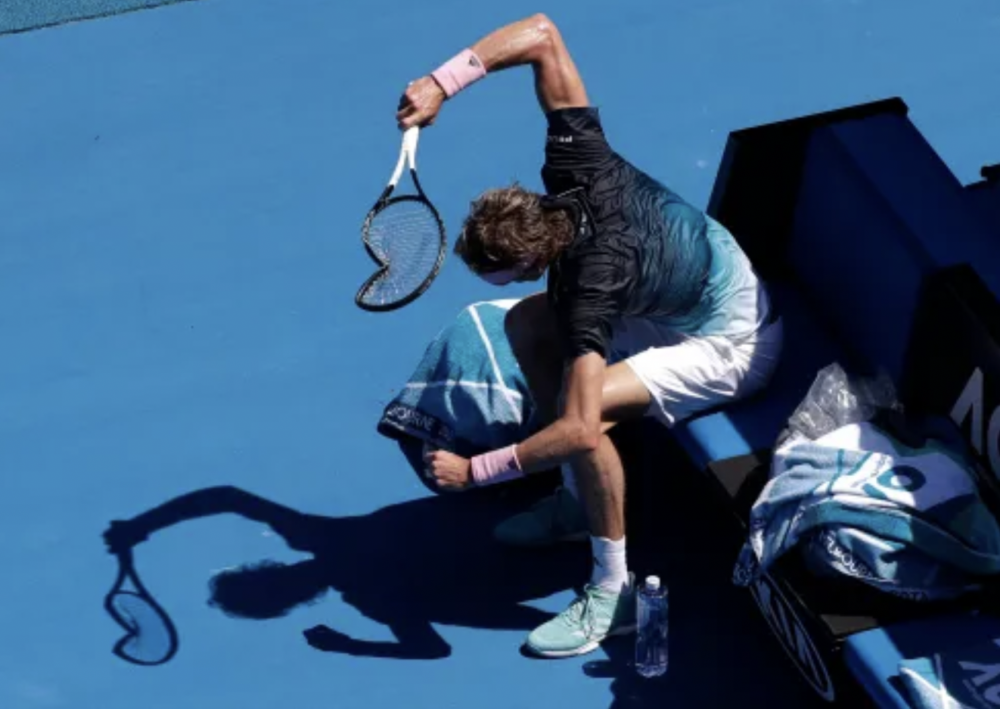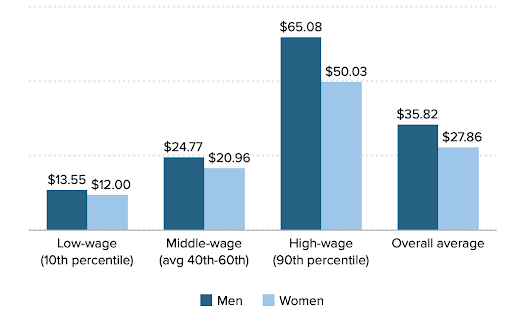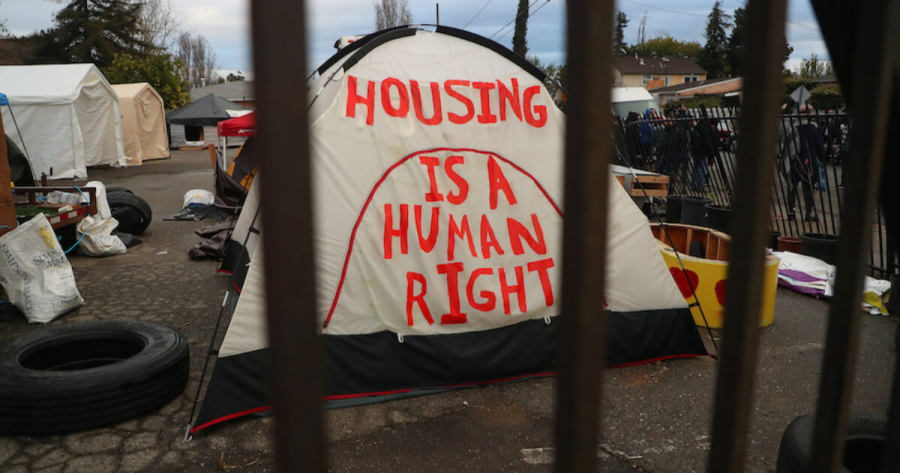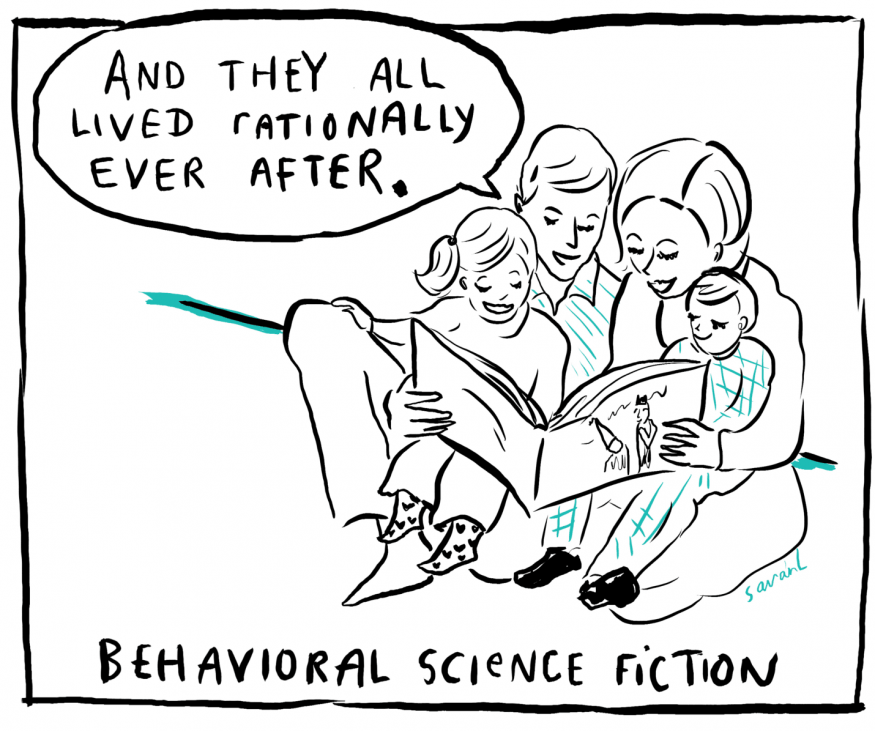
TUCKER GAUSS & GRIFFEN SHUFELDT – FEBRUARY 15TH, 2024
Tennis fans are, fundamentally, very simple people. We (yes, I proudly count myself among them) enjoy watching a small, fluffy yellow ball fly across a net for hours on end. We can’t even count properly: each game’s scoring starts at love, then jumps to 15, 30, randomly decides to move to 40 instead of 45, and then ends before it truly begins. However, while tennis fans may be simple people, its core problems are decidedly not simple. Evidently for economic experts, the income distribution for players is just as broken as the sport’s scoring system. The 100th ranked player in the world earns a small fraction of the top players in the game (see: Figure 1). Although, the lower-ranked players are not the only victims of the dysfunctional tennis system, as the $10 million prize money for the top earning player in 2022 (Carlos Alcaraz) was equivalent to only the 146th highest-earning player in the NBA or the 202nd player in the NFL.
 Figure 1
Figure 1
In short, tennis has an inequality problem.
Rankings Go Up By One, But Earnings Go Up By Tenfold
It’s 2014. Novak Djokovic and Fernando Verdasco, two professional tennis players, seem to lead pretty similar lives. Both participate in Grand Slams, the four biggest tournaments in tennis. Both secure major sponsorships from clothing and sports brands. Both competed against Rafael Nadal in famous 5-set epics at the Australian Open in 2009 and 2012 (if anyone has about twelve hours to spare, please watch these masterpieces). Sure, Djokovic performs much better—sitting atop the tennis rankings while Verdasco is outside the top 30. Nonetheless, the picture looks eerily similar, right?
These similarities end when both players open their wallets. That year, Djokovic’s prize earnings were over $7 million, while Verdasco won closer to $700,000. Comparable athletes, but the earnings for one athlete were tenfold the other.
It’s not like this in other pro sports. The difference between the 32nd and 1st highest-paid players in the MLB, for instance, was 62%. Again, contrast that with the enormous 1000% gap in tennis.
One may recall the Lorenz Curve, a graphical representation of inequality in a country (see: Figure 2). A 45° line signifies a completely equal world where everyone has the same income, and the distance between this and the Lorenz Curve demonstrates the inequality of income distribution. As the curve bows out further and the area of A increases, the curve approaches complete inequality.
 Figure 2
Figure 2
The Lorenz Curve usually serves as a tool for hotly-contested debates on the efficacy of the European welfare state versus corporate favoritism in America (or other discussions way more important than my silly tennis fixation). However, this economic principle is shockingly revealing when applied to sports. Just among the top 30 earners, the concentration of wealth in tennis is far clearer than in other major sports (see: Figure 3).
 Figure 3
Figure 3
So, why does this inequality exist? More importantly, how can fans, players, and stakeholders address it?
ATP, ITF, Grand Slams…Too Many Cooks In the Kitchen
One significant cause is the lack of a unified governing body in tennis. Football has the NFL, basketball has the NBA, and baseball has the MLB—all of these sports resolved their management problems long ago and now reap the benefits. Meanwhile, tennis is stuck in an archaic system: the four Grand Slams govern themselves, the International Tennis Federation manages the Olympics and Davis Cup, and the Association of Tennis Professionals (ATP) manages all other tournaments.
This is the athletic equivalent of playing with a wooden racket in 2023. It’s honestly absurd.
The consequences are dire, too. Tennis players receive a mere 17.5% of the $2.2 billion in revenue that the sport generates annually. For those keeping score at home, NFL players earn 47%, NBA players earn 50%, and Premier League players earn 61% (see: Figure 4). Marxian economists may be licking their lips, eager to cite this disparity as yet another example of the capitalist bourgeoisie depriving workers of their fair earnings under the Labor Theory of Value. In truth, tennis’ broken management system is the likely culprit, as tournaments are left to independently maintain courts, preserve stadium contracts, advertise events, and attract players without the financial support of a unified body.
 Figure 4
Figure 4
What Do Uber Drivers and Tennis Players Have in Common?
Another serious obstacle to pay equality in 2023: the lack of labor protections for players. Other sports such as football, baseball, and basketball regard their players as employees, thereby guaranteeing them healthcare insurance, pensions, antitrust protections, and other rights. Additionally, substantial labor unions represent players in these sports, ensuring further protections. For instance, the NFL’s Collective Bargaining Agreement is continually negotiated and renewed to adapt to the players’ changing needs, such as a 20% minimum pay increase in 2020. This monopsony model of labor, with one employer and one representative body for employees, often improves labor outcomes by balancing negotiation power dynamics and guaranteeing better payments.
These don’t exist to the same extent in tennis. Under current labor laws, tennis players are independent contractors like Uber drivers and independent physicians. This designation has its benefits, such as empowering players to determine their own schedules, coaches, and sponsorships. However, the more realistic spin to this story—pun fully intended—is that players bear the entire financial burden of travel costs, housing, training, healthcare, and other necessities.
As a result, most players struggle to make a consistent living. Take world #195 Noah Rubin for instance. Based on earnings estimates for a similarly ranked player, Rubin made approximately $199,000 in 2019. This seems fantastic on the surface. However, after paying for taxes, travel, and equipment, Rubin only took home about $60,000. For reference, the median household income in the US was actually higher at $68,703 that year. As independent contractors, tennis players suffer from inequality to the extreme. As Rubin’s experiences demonstrate, the economic equivalents of multimillionaire celebrities and truck drivers can compete on the same court.
Even the protected ranking system, which preserves player rankings in the event of illness, injury, or leave, is a bandaid over a bleeding wound. The protected rankings only last 12 months, and returning players are expected to immediately compete at the top tournaments against the best players to maintain their position. Further, players earn nothing during their layoffs, placing pressure upon them to return as soon as possible. This often prevents players from properly rehabilitating in an optimal, low-pressure environment for recovery.
Tennis Balls and Pay Inequality Are BOTH Circular
Despite its glaring flaws, tennis’ supposedly meritocratic system seems perfect to the libertarians in the room. The free market picks the winners and losers, not an overruling bureaucracy. Commentator Cliff Drysdale seems to agree, celebrating the “purity” of winners earning more than losers. This neglects a crucial detail: tennis is far from a meritocracy.
Tennis players move up in the ranking system by accumulating points, which they receive for advancing in different tournaments. Tournaments are tiered based on the points they distribute: 2,000 for winning a Grand Slam, 1,500 for winning the ATP Finals, 1,000 for Masters, and then 500s, 250s, and Challenger tournaments at the bottom. Only higher-ranked players qualify for the higher-level tournaments, artificially allocating earnings opportunities for the top players at the expense of the bottom-ranked players. This is particularly noticeable between main ATP events and Challenger or ITF Men’s tournaments (see: Figure 5). (Side note: most readers will observe a glaring gap between the male ATP and the Women’s Tennis Association, or WTA—I’ll get to that soon, don’t worry.) With more points and higher rankings come better prize money and sponsorship deals, which in turn perpetuates tennis’ wealth disparities. Thus, the inherent structure of player rankings is designed to favor the top players and continually support them with chances to maintain their rankings, making it even more difficult for lower-ranked players to break through.
 Figure 5
Figure 5
A 2001 decision to shift Grand Slams from 16-seeds to 32-seeds further exacerbated the issue. Expanding the number of seeds at tournament draws protects the top players from facing better players in the opening rounds, limiting early-round upsets. Furthermore, during the COVID pandemic, the ATP decided to freeze rankings to accommodate for global shutdowns and the suspension of major tournaments, including Wimbledon. While this was initially a sensible decision, the rankings freeze lasted until August 15, 2022. This prevented better players from rising and protected top players. For example, under normal circumstances, Roger Federer should have left the top 100 in 2021, but instead remained in the top 5 despite not playing since early 2020. Again, these decisions artificially inflated the success of the top players.
This all creates a circular, self-perpetuating cycle whereby the top players have chance after chance to stay on top. Just as economic mobility occurs through changes in individual and generational wealth over time, economic mobility in tennis relies on shifts in rankings to reward more talented, hard-working players. In the last few decades, though, institutions seeking to protect the interests of top players have limited mobility for rising players.
For talented young players hoping to establish themselves, this perpetual inequality is reaching breakpoint. Not only do new athletes have to manage the enormous expenditure of tennis training due to the emphasis on technical proficiency, making the sport especially difficult, but they have to move up the rankings in a broken system. Worse, most breakthrough players have no choice but to sacrifice higher education in order to advance their games. A mere 13 out of the ATP top 100 played in college, meaning that young tennis players lack the economic security of a degree that their counterparts in football or basketball likely possess. The cards are stacked against potential stars, many of whom ultimately quit due to tennis’ extensive financial burdens.
Regrettably, Predictably, Women’s Equality Is Still Years Away
Sigh. As part of this discussion on income inequality within each of the respective tours, it’s painfully obvious that inequality between the tours persists (see: Figure 6). Although the Grand Slams provide equal prize money to men and women, thanks in large part to Billie Jean King and the historic Battle of the Sexes match in 1973, the same cannot be said for most of the lower Masters 1000 and 500 tournaments. While these events provide less revenue and points, they remain an essential portion of most tennis players’ schedules and incomes. Thus, the gender pay gap in tennis closely mirrors that of the US economy: 80 cents on the dollar.
 Figure 6
Figure 6
The likely reason for this widening gap? Masters 1000 tournaments, the second-highest paying events on the tennis schedule, which comprise a major portion of earnings for players with top 20 rankings. Canada, Cincinnati, and Rome are all mandatory Masters 1000s, possessing comparable earnings significance as Slams yet without the equal pay protections.
Looking solely at the elite money-makers in tennis, only one female player—Serena Williams—is among the top 50 highest-paid athletes in 2023. The top male tennis player, Roger Federer, lies a whopping 40 spots above her. To add salt to the wound, Serena retired last year—ending both her career and prospects for equal pay in the near future. This gap reflects an interesting dynamic in the tennis gender pay gap: financial disparities are more significant for elite players. In 2022, five of the top six earners in tennis were men. While lower-ranked players earn similar amounts in both the male ATP and the WTA, the top earners are generally separated by millions of dollars in prize money (see: Figure 7).
 Figure 7
Figure 7
Close observers of the US economy probably just did a double take. Just like in tennis, gender wealth disparities in the US are more significant for high-earners than in any other income bracket (see: Figure 8). While it may be rare to find someone who mourns the relative losses of multimillionaires, these inequalities nonetheless reflect the profound barriers that remain towards achieving full parity between men and women. To use another tennis analogy, it’s not enough to put men and women on the same courts—they also need to have similar rackets, strings, and balls in order to both succeed, and prize money differences systematically deprive women of equality of opportunity.
 Figure 8
Figure 8
Is the (Wimbledon) Grass Greener on the Other Side?
Inequality is like a tennis racket: it’s multilayered, with numerous strings from different sources intersecting to create new patterns and dynamics. Tennis’ issues are similarly multifaceted, with problems ranging from a fractured management structure to the ranking system itself. While solutions to these profound flaws may take decades to come to fruition, solutions are beginning to emerge in 2023.
Most notably, current world #1 Novak Djokovic launched the Professional Tennis Players Association (PTPA) as an independent players organization guided by the principle of collective bargaining. The PTPA leads negotiations with the ATP to advocate for better working conditions, more equal pay distributions, and improved anti-doping appeals processes. Since its founding in 2020, the PTPA responded to criticisms from US Open champion Dominic Thiem by including female players, maintaining a full-time staff, and clarifying its goals. In essence, the PTPA is now here to stay.
Additionally, the ATP continues to serve up game-changing solutions (wink wink) to income inequality. Recently, the organization increased prize money for 250 and 500 level tournaments by 80% and 60%, respectively. Further, a 2022 deal will enact profit-sharing between tournaments and players in addition to prize money awards. Masters 1000s will allow independent auditing of their financials, increase prize money by 2.5% each year from 2023 to 2053, and provide players with a share of tournament profits.
In a masterful stroke of redistributive genius, 2024 will also be the first year of a minimum wage in tennis. In a radical shift from the current system’s variability, this trial initiative guarantees $300,000 for the top 100, $150,000 for ranks 101 to 175, and $75,000 for players from 176 to 250. Players who do not achieve these minimums through prize money and sponsorships will receive subsidies from the ATP, closely modeling universal basic income experiments in Portugal, Finland, and Kenya. The ATP will also expand protections for injured players who participate in fewer than nine tournaments a year. This injury protection initiative establishes thresholds of $200,000, $100,000, and $50,000 for the top 100, 175th, and 250th ranked players, respectively. While not perfect, especially for the 101st ranked player who misses out on $150,000, these are meaningful steps towards more equal pay.
Billie Jean King can also hold her head up high, as the ATP and WTA have made genuine progress in achieving gender pay equality in recent years. Talks to merge the ATP and WTA—antitrust concerns be damned—are more prominent than ever, with support even coming from the now-retired Roger Federer. This proposal has the potential to reduce wealth inequalities by consolidating sponsorship, broadcasting, and management for tournaments. Notably, the ATP and WTA recently struck a deal to achieve pay equality across all tennis events by 2033. It’s a decade away, but promising nonetheless.
Featured Image Source: The Denver Post
Disclaimer: The views published in this journal are those of the individual authors or speakers and do not necessarily reflect the position or policy of Berkeley Economic Review staff, the Undergraduate Economics Association, the UC Berkeley Economics Department and faculty, or the University of California, Berkeley in general.



